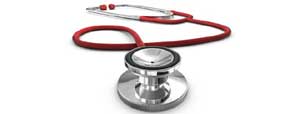
Medical Opinions

INFORMATION
Over the years I have obtained reports that have established that gastrograffin placement into the lungs is very dangerous, especially when suffering a pre – existing condition such as Acute Pancreatitis. The following opinions were obtained over the past 10 years from various medical experts. One of the first expert reports obtained for me on behalf of the hospital totally denied that gastrograffin aspiration would cause any problem at all and not contribute to the worsening of my pre-existing pancreatitis. Amazing !
Question: What would be the effect of having 400mls of gastrograffin aspirated (actually placed) into the left lung?
Answer:
“Gastrografin aspiration into the lung would have caused either pulmonary oedema or delayed pulmonary oedema depending on whether the gastrograffin was hypertonic or hypotonic solution”.
Dr A B Wood
Consultant Surgeon – Tayside University Hospital, Dundee, Scotland - read the full report
Question:
On my medical notes it shows that 400mls of 2% diluted gastrograffin was aspirated into my lung yet on the imaging report it shows 3% - Does this make a difference?
Answer:
“The 2 – 3% is very important. The anaesthetist indicates awareness that this is a serious mistake but says at 3% it would be hypertonic and therefore very dangerous but at 2% it would be hypotonic and therefore not as dangerous”.
Dr Irene Campbell – Taylor – Clinical Neuro-Scientist - read the full correspondence
Question:
Was the gastrograffin aspirated or placed into my left lung?
Answer:
“The imaging notes indicate that 3% gastrograffin was introduced by error into your lung. You did not aspirate! That would have been an accident”. It was placed into your lung by medical staff and could have been lethal”. It was because of this error that you were a candidate for ICU”. The medical notes indicate that a serious error was made that severely damaged your lung and could have been fatal!”
Dr Irene Campbell – Taylor – Clinical Neuro-Scientist
Question:
What would the effects be of putting 400mls 2% gastrograffin into the lungs?
Answer:
“It is likely that the patient would cough & splutter. It is likely that the patient would experience reduced oxygen in the blood (Hypoxia) and notice some difficulty breathing. We could not deny the possibility that a severe problem could occur”.
Dr Fisher – Clinical Professor of Anaesthia/Medicine
Question:
What if the patient already had pre-existing Acute Pancreatitis?
Answer 1:
“It is theoretically possible that it would make the pancreatitis worse, and would make the prognosis worse!”
Dr Fisher – Clinical Professor of Anaesthia/Medicine
Answer 2:
“Once pancreatitis has been initiated vascular events seem to play a major role in it’s propagation”. “Factors which impair pancreatic blood flow are capable of converting a mild pancreatitis into a more severe form of the disease”.
David W Rattner & Andrew L Warshaw
Answer 3:
“Any hypoxia will adversely affect an inflammation such as pancreatitis to varying degrees, depending on the severity of the condition and the degree of pancreatitis”.
Dr Irene Campbell – Taylor – Clinical Neuro-Scientist
Question:
Did the gastrograffin incident contribute to the worsening of my condition?
Answer 1:
The onset of pancreatitis can usually be indicated by a rise in the serum amylase level of the patient. Once stabilised, the amylase levels drops back to normal.
When my amylase level was first tested it was 1931. After my condition was stabilised it fell to 474. After the gastrograffin incident it rose again to 840.
Why did it rise again, when they had my condition stabilized. Delayed pulmonary oedema?
According to my x-ray report at the Logan Hospital, there was swelling of the pancreatitis, but no visible signs of necrosis.
“From the Logan Hospital medical notes it appears that the patient’s condition deteriorated significantly approx twelve hours after the insertion of the gastrograffin”. “The patient’s deterioration appeared to be predominantly respiratory and the deterioration would appear to be due to hypoxia and thus it would be hard to dissociate from the fluid in the lung”.
Dr J Roche – Associate Professor of Radiology
Answer 2:
"The instillation of the gastrograffin would have had an adverse affect on your pancreatitis because a person as yourself (sick with pancreatitis) needed all of your resources to fight the illness (pancreatitis) and therefore losing on fifth of your lung capacity due to the instillation of gastrograffin had to make your situation worse by making you less able to combat the pancreatitis".
Dr J Roche – Associate Professor of Radiology - read the full report
Question:
Did the gastrograffin incident cause hypoxia?
Answer:
From the Medical & Work details report
Condition 1 – Diagnosis – “Severe Acute Necrotising Pancreatitis”
Clinical Features: “Transfer from Logan Hospital with severe idiopatic pancreatits 21.1.00”
“Currently convalescing with an open abdominal wound”
Condition 2 – Diagnosis – “Chemical Pneumonitis”
Clinical Features: “Severe hypoxia due to gastrograffin aspiration”
The treating surgeon at The Mater Hospital obviously thought that the hypoxia was a result of the gastrograffin incident and not the acute necrotising pancreatitis – and was worth mentioning!
Dr Matthew Carmody
General Surgeon
